Timmerhuis: OMA unveil a cascading urban complex in Rotterdam

A grey pixelated cloud rises from Rotterdam's street level to form the city's latest architectural addition. The Timmerhuis, created by Dutch super-practice OMA is an all-encompasing response to several starting points; it is an inner city, urban structure that unites office, public space and residential; it was conceived as a beacon of sustainability; and it is also a reflection on a city's architectural identity. 'It is informal and monumental at the same time,' explains OMA's partner in charge Reinier De Graaf. 'It is a mirror of its own identity.'
Timmerhuis sits adjacent to a municipality establishment dating from the 1950s, on a site symbolising, in a way, the reconstruction of post-war Rotterdam. The plot flags up the city's particular urban identity; its flattened city centre meant that a large part of Rotterdam had to be completely rebuilt.
Now carefully designed for its plot, the new building's biggest part is occupied by city hall offices. The structure's cascading form culminates into two peaks that house 84 residential units. The series of apartments feature sky patios boasting exceptional views over the city (a rare luxury in central Rotterdam).
OMA's design forges close relationships with its context, as new and old blend physically and symbolically. The architects have used the city museum's archive to create striking tapestries adorning carefully designed interiors that cater for a diverse array of office typologies – open plan, meeting rooms, 'break-out' spaces, and work cubicles, to name a few. They have also turned part of the original municipality building's ornamental brick façade into an interior wall, reminding users of the site's historical heritage.
On the ground floor, however, the building reveals a more public front. The 'passage', an interior thoroughfare, dissects the space to connect the existing city hall premises and the Eastern portion of the city centre. A new museum showcasing the city's archive is set to open in February in a second atrium. Cafes and shops complete Timmerhuis' contribution to the surrounding street life.
As part of the brief, this is one of the country's most sustainable buildings to date, explain the architects. 'It had to be the most sustainable mixed-use building in the Netherlands – and it is. The components are recyclable,' says De Graaf, 'this was the main idea for sustainability.' Its structurally efficient modular form also contributes to this agenda.
Seen against the backdrop of the city's skyline, Timmerhuis 'dissolves into Rotterdam,' adds De Graaf; visually, physically, as well as symbolically.
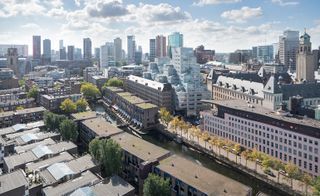
Designed to combine city hall offices, public areas and a museum, the complex also offers residential units
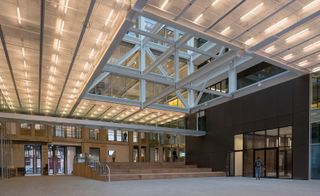
The ground level is open to the public - part of it will include a museum showing the city archives

The structure is built on a central Rotterdam site that had remained empty post-war, symbolising the city’s need for rebuilding

Inside, the structure houses a diverse array of office typologies, from open plan to work cubicles, meeting rooms and break-out spaces

This is also one of The Netherland’s most sustainable buildings, using a modular system and recyclable components

The residential units are placed at the building’s top, offering striking city vistas - a rarity in Rotterdam’s centre
INFORMATION
For more information on OMA visit the website
Photography: Ossip van Duivenbode
Wallpaper* Newsletter
Receive our daily digest of inspiration, escapism and design stories from around the world direct to your inbox
-
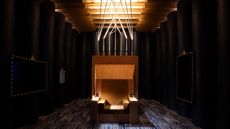 David Lynch presents 'A Thinking Room' at the Salone del Mobile
David Lynch presents 'A Thinking Room' at the Salone del MobileHere's a first look at the David Lynch Salone del Mobile 2024 installation, a cinematic experience within the fair curated by Antonio Monda
By Laura May Todd Published
-
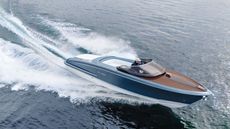 Riva El-Iseo is the legendary boat builder’s first fully-electric motor yacht
Riva El-Iseo is the legendary boat builder’s first fully-electric motor yachtThe Riva El-Iseo electric speedboat blends classic Italian lines with a silent, powerful and zero-emission powertrain
By Jonathan Bell Published
-
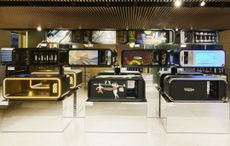 Technogym Home Bench 40 ways: designers interpret the home exercise classic
Technogym Home Bench 40 ways: designers interpret the home exercise classicTechnogym marks its 40 anniversary with 40 special editions of its Home Bench created in collaboration with international creatives
By Rosa Bertoli Published
-
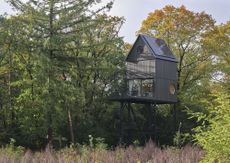 A nest house in the Netherlands immerses residents in nature
A nest house in the Netherlands immerses residents in natureBuitenverblijf Nest house by i29 offers a bird-inspired forest folly for romantic woodland escapes in the Netherlands
By Ellie Stathaki Published
-
 The House Under the Ground is a Dutch home surrounded in wildflowers and green meadow
The House Under the Ground is a Dutch home surrounded in wildflowers and green meadowThe House Under the Ground by WillemsenU is a unique Dutch house blending in its green field
By Harriet Thorpe Published
-
 Open Park Villa is a minimalist Dutch home embracing its parkland setting
Open Park Villa is a minimalist Dutch home embracing its parkland settingOpen Park Villa by i29 architects offers a green residential oasis in a formerly military-owned plot turned parkland
By Ellie Stathaki Published
-
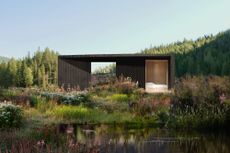 Câpsula, a series of tiny homes, champions 'living large with less'
Câpsula, a series of tiny homes, champions 'living large with less'Câpsula, initiated by architecture studio i29, brings together tiny homes, wellness and a design-led approach at Dutch Design Week 2023
By Ellie Stathaki Published
-
 Buffalo AKG Art Museum opens, inviting us into its OMA-designed home
Buffalo AKG Art Museum opens, inviting us into its OMA-designed homeBuffalo AKG Art Museum opens its new, OMA-designed home in the USA
By Ellie Stathaki Published
-
 Kunlé Adeyemi’s water cities and visions of future living at Het Nieuwe Instituut
Kunlé Adeyemi’s water cities and visions of future living at Het Nieuwe Instituut‘Water Cities Rotterdam. By Kunlé Adeyemi’ opens at Het Nieuwe Instituut in The Netherlands, offering visions of future living
By Ellie Stathaki Published
-
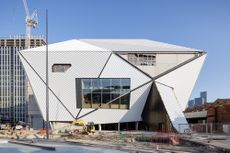 Factory International by OMA is set to be a moveable feast
Factory International by OMA is set to be a moveable feastFactory International by OMA is a Manchester cultural centre designed to break barriers between audience and performer
By Ellie Stathaki Published
-
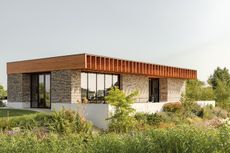 Rotterdam house is a sustainable home with a defining timber roof
Rotterdam house is a sustainable home with a defining timber roofTerphouse is a green Rotterdam house by Studio AAAN, featuring a distinctive low-slung, timber roof
By Ellie Stathaki Published